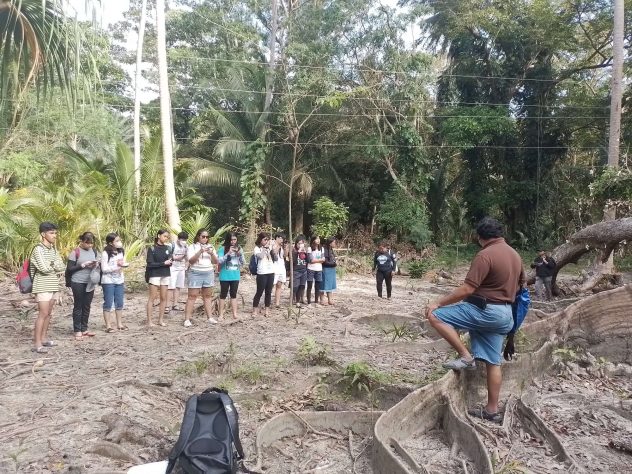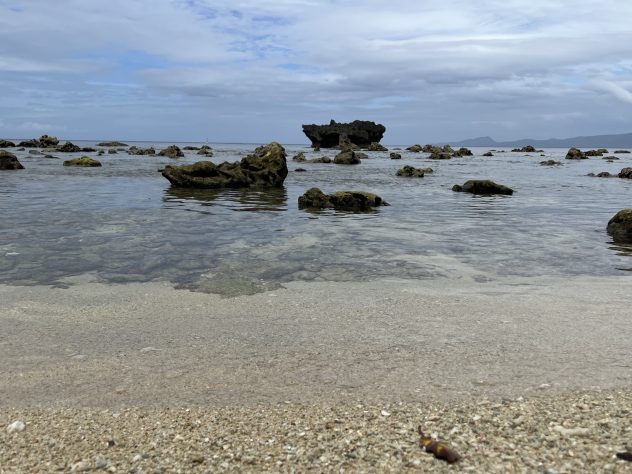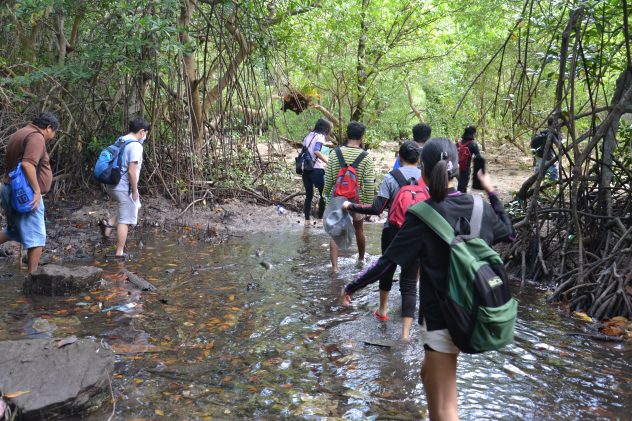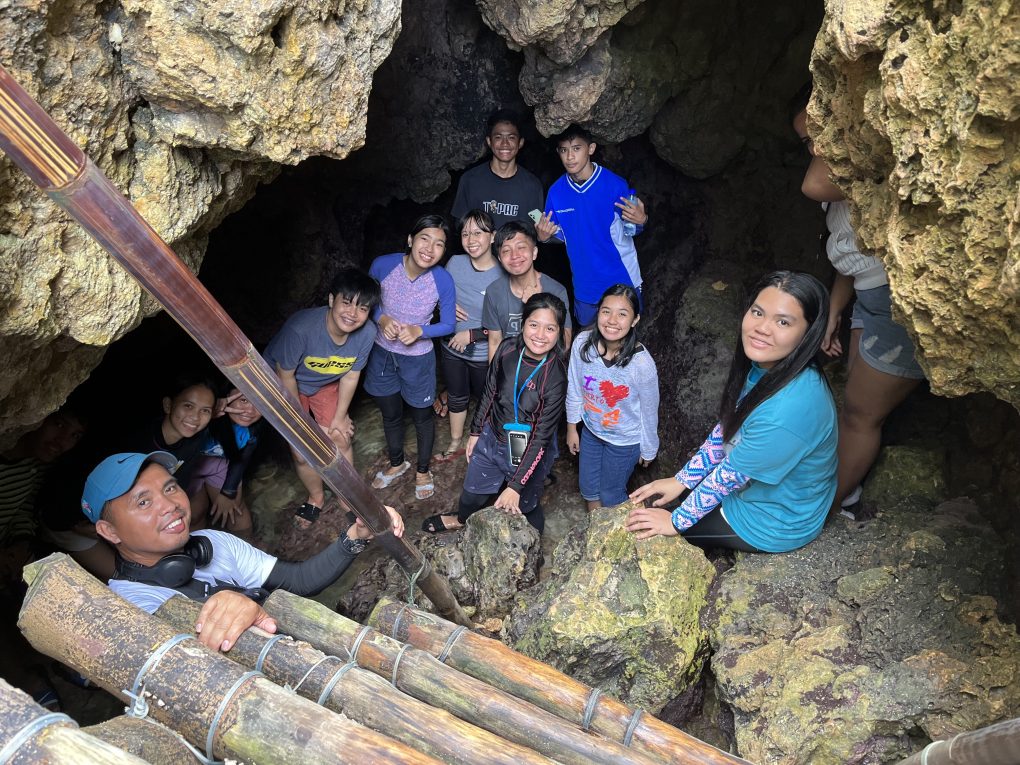DALOY is an environmental journalism program participated by selected students from various high schools in Puerto Galera. It aims for young student journalists to address environmental problems by writing news and articles to spread awareness and information.
As participants, we were taught the significance of taking action against the climate crisis and plastic pollution. The Daloy program allowed us to experience and learn more about nature’s beauty to get a more profound understanding of the significance of protecting and fighting for it. On the 10th of February, we gathered with excitement at Stairway Foundation at 7 in the morning.

The first place we went was a land owned by the Locsin family where mangroves could be found. The first few minutes after we arrived seemed terrifying as the surroundings were so quiet that you could even hear a pin drop. One of what we saw was the cut mangrove tree called Dungon Tree. I was stunned because it was my first time seeing a tree like it. The tree splits down the middle, and its root stays within a few centimeters of the soil’s surface, unlike an ordinary tree where the roots are submerged underground. Its huge trunk screamed of confidence like it wanted everyone who saw him to feel intimidation. This infatuating tree invited a tingling sensation to my soul as we looked upon it.
After a while, Mr. Dan Enriquez explained about this tree and hoped that the next landowner’s generation would not cut it. From what he said, I felt inspired. I wondered what would happen on the land if the tree was not there. Mr. Dan Enriquez joked that humans did not cut it, but by the spirits, so no people will come to that place to ruin it. I didn’t believe what he said, and I just laughed. The tree could have been struck by lightning.
We have also been in other mangrove areas in Minolo. In other mangrove areas, there were many plastics – bottles, candy wrappers, some tires, and many others. Seeing these plastics made me feel disappointed because we are all trying to solve our environmental challenges, yet still, some people continue to litter and throw plastics irresponsibly.
We feel the gentle breeze. The refreshing winds soothe our skin and leave its whistling sounds in our ears as we walk along the beach. Later on, we boarded the Stairway boat. I was excited to ride again on this boat because I hadn’t been on it for a long time. The boat crew, who supported us in making our ride safe, parked the boat in Minolo. While the boat was moving, we passed by the mountain with a natural carving on its side. It looked like a heart-shaped mountain, its peak reaching up towards the sky. Its rocky face is weathered and worn, with years of harsh weather and the passing of time. I can feel the peace and serenity this mountain brings, and it makes me feel incredibly small in comparison – a reminder of the power of nature and how nothing can stand in its way.

Our trip was tiring, but we were relieved when we docked on Houbis Island. This island is a paradise of crystal blue waters, tiny fine sand, and a haven for colorful schools of fish. Playful birds chirped and fluttered in the trees, and their songs echoed through the air. We took a rest first and had a snack. The caretaker gave a brief introduction about Houbis Island. He is the forest ranger, and their head is Mr. Eduardo Laoagan. They showed us a chair made of bamboo, and it was adjustable. I thought that it could be replicated in Stairway because it is also a reduction of plastic use. After showing it, we started our walk to the mountain. Mr. Michael Castro and Mr. Mar Aplaya, the sea guards on our trip, accompanied us so that if someone got lost, someone would immediately help. I was happy while walking because it was peaceful and serene. This island is an ideal escape where one can relax, explore, and reconnect with nature.
We also walked for almost two hours, so most of us were already hungry. There is satiating food prepared for us by the Municipal and Natural Resources Office (MENRO). I even stumbled across new friends as we explored, bonding with them as we journeyed through this remarkable exploration. Beneath the water’s surface lies a hidden wonderland waiting to be discovered, an underwater cave with rocky walls illuminated by the ray of sunlight. Because it’s the first time I’ve seen it, I don’t want to leave it. I hope it will be preserved and not destroyed. We wanted to dive into its depths if we had nowhere else to go. After visiting the underwater cave, we walked down to the beach. While we were walking, MENRO showed us the black bamboo. Its tall and dark stalks provide a peaceful home from predators and a hiding place. The black bamboo’s presence creates a sense of tranquility and calmness.
Later, we arrived at the beach, waited for the boat crew to pick us up, and boarded the Stairway boat. The next stop was Baclayan Mountain. The mountain view was spectacular. The peaks of the mountains stood tall and proud. Far in the distance, villages and towns could be seen, their rooftops twinkling in the fading light. The sea view from Baclayan Mountain was just as stunning as the mountain view. The deep blue waters stretched as far as my eyes could see. The horizon was a perfect line, and the peaceful atmosphere was broken only by the murmurs of our amazement. It was a breathtaking sight that would remain engraved in our minds forever.

The Puerto Galera, Mangrove, and Ecotourism Area also has magnificent views and gives a peaceful and relaxing ambiance. Before we started going around, Ms. Felinel Nagapala, Community Development Officer of Malampaya Foundation Inc, gave a lesson. We studied the Marine Protected Area (MPA) and why it exists. What does it even help? I learned that an MPA is a section of the ocean where the government limits human activity. Many MPAs allow people to use the area in ways that do not damage the environment. The mangroves in this place have different types, home to 13 mangrove species dominated by rhizopods.
As we concluded our trip, I was grateful and delighted as we went to various places where we learned significant lessons, like how we connected to nature. Not only did it give us a chance to appreciate the beauty of nature, but it also allowed us to gain a greater understanding of the environment and the impact that humans have on it. We were able to see first-hand the possible destruction that careless human actions can cause, and we were also able to learn about the importance of protecting and preserving the environment for future generations.
Protecting the environment is an important task we all must participate in. We must be mindful of the impact on the environment of our actions and work together to reduce our carbon footprint. We must be aware of the importance of recycling and be proactive in reducing waste and preserving our natural resources. We must also take steps to protect our wildlife and habitats and be willing to invest in new technologies to help protect our environment. By taking these steps, we can ensure that future generations will enjoy the same stunning views we were so lucky to experience on our environmental field trip in the island of Puerto Galera.
